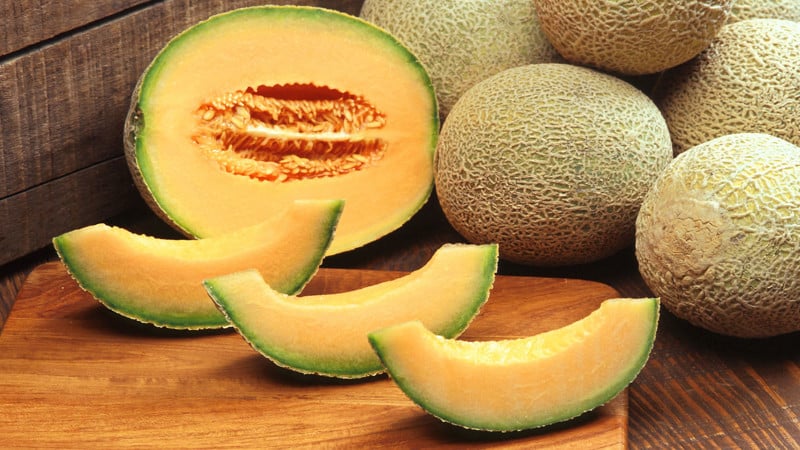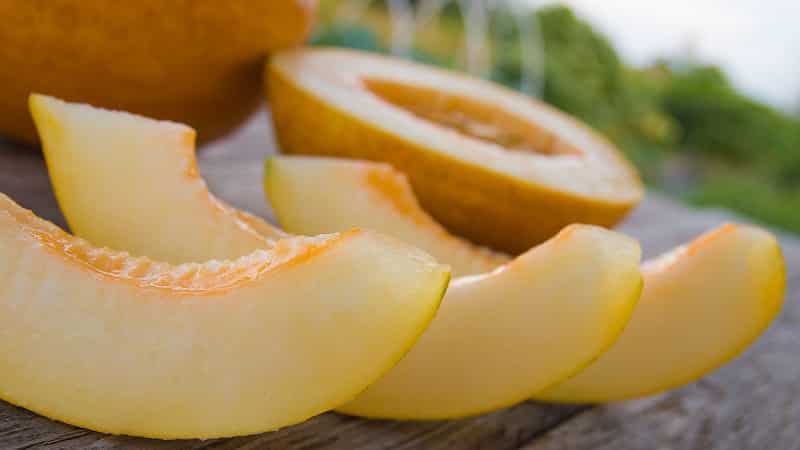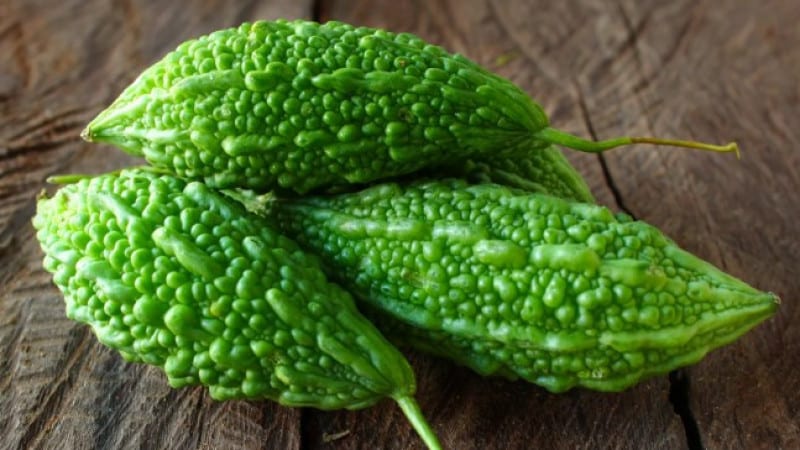Can you eat melon if you have type 2 diabetes?
The delicious melon fruits can literally give a person happiness - due to the special compounds that make up them, and in particular a substance called choline. This aromatic delicacy is famous not only for its taste, but also for a number of healing properties, thanks to which melon is successfully used in folk medicine.
One of the metabolic disorders of the body is diabetes mellitus. With an abundance of unhealthy food, this disease affects not only elderly patients, but also young people. From the article you will find out whether or not you can eat melon for type 2 diabetes, and whether this product will alleviate or aggravate the condition of patients.
Composition of melon pulp

To assess the beneficial and harmful properties of melon, it is worth understanding the composition of the edible part of the fruit. There are several varieties of melons on the Russian market:
- Collective farmer - has a classic, smooth, round shape with a thin yellow skin and whitish-yellow flesh;
- Torpedo - oval elongated shape with a network of cracks on a pale yellow peel;
- Pineapple melon - has an oval shape and a yellow-orange peel with cracks;
- Cataloupa - round-oval in shape with green skin and bright orange flesh;
- Ethiopian - has oval-round fruits with a rough skin, longitudinal veins divide them into segments, the color of the pulp is white.
Rarely found exotic varieties of Vietnamese melon, Mouse and Horned melon, which are called Kiwano.
The content of nutritional elements in the pulp varies depending on the variety and growing conditions. Average indicators for the varieties Kolkhoznitsa and Cantaloupe are presented in the table.
| Nutritional indicator | Amount per 100 g of melon pulp Kolkhoznitsa | Amount per 100 g of Cantaloupe melon pulp |
| Calorie content | 35 kcal | 34 kcal |
| Squirrels | 0.6 g | 0.84 g |
| Fats | 0.3 g | 0.19 g |
| Alimentary fiber | 0.9 g | 0.9 g |
| Starch | 0.1 g | 0.03 g |
| Sucrose | 5.9 g | 4.35 g |
| Glucose | 1.1 g | 1.54 g |
| Fructose | 2 g | 1.87 g |
| Maltose | — | 0.04 g |
| Galactose | — | 0.06 g |
| Total carbohydrate content | 8.3 g | 8.16 g |
| Water | 90 g | 90.15 g |
| Vitamin A | 33 mcg | 169 mcg |
| Beta carotene | 400 mcg | 2020 mcg |
| Vitamin E | 0.1 mg | 0.05 mg |
| Vitamin C | 20 mg | 36.7 mg |
| Vitamin K | — | 2.5 mcg |
| Vitamin B1 | 0.04 mg | 0.04 mg |
| Vitamin B2 | 0.04 mg | 0.02 mg |
| Vitamin B5 | 0.23 mg | 0.11 mg |
| Vitamin B6 | 0.06 mg | 0.07 mg |
| Vitamin B9 | 6 mcg | 21 mcg |
| Vitamin PP | 0.9 mg | 1.5 mg |
| Kholin | — | 7.6 mg |
| Phytosterols | — | 10 mg |
| Potassium | 118 mg | 267 mg |
| Calcium | 16 mg | 9 mg |
| Magnesium | 13 mg | 12 mg |
| Sodium | 32 mg | 16 mg |
| Sulfur | 10 mg | — |
| Phosphorus | 12 mg | 15 mg |
| Chlorine | 50 mg | — |
| Iron | 1 mg | 0.21 mg |
| Iodine | 2 mcg | — |
| Cobalt | 2 mcg | — |
| Manganese | 0.04 mg | 0.04 mg |
| Copper | 0.05 mg | 0.04 mg |
| Fluorine | 20 mcg | 1 mcg |
| Zinc | 0.09 mg | 0.18 mg |
| Selenium | — | 0.4 mcg |
If you have diabetes, it is important that you get enough zinc into your body. The highest concentration of this microelement is in the fruits of the Cantaloupe variety.
When asked if melon increases blood sugar, The answer is unequivocal - yes. The pulp of ripened fruits of all varieties contains from 6 to 10 g of simple carbohydrates per 100 g of edible part. Simple carbohydrates are represented by sucrose, glucose and fructose. The content of these substances directly affects the glycemic index of the product.
For type 2 diabetics, endocrinologists and nutritionists recommend:
- include in the diet foods with a glycemic index of 55 and below without restrictions;
- with average (56-69 units) - consume in moderation;
- with high (from 70 and above) - exclude.
Glycemic index of melon pulp – 65 unitsTherefore, it is recommended to limit the consumption of this fruit for diabetes mellitus.
Useful properties of melon
Biologically active substances contained in melon pulp have a number of positive effects on the human body:
- easily digestible carbohydrates help the nervous system recover from stress, surgery and injury;
- vitamins A and E promote rejuvenation and renewal of skin cells;
- beta-carotene restores twilight vision;
- water (90-92% of the composition) helps to withstand the heat in summer and protects against dehydration;
- vitamin C supports the immune system, participates in the synthesis of blood enzymes and collagen - the building protein of connective tissue;
- vitamin K is responsible for blood clotting;
- vitamins PP and group B normalize metabolism, restore the functions of the nervous, muscular, cardiovascular and circulatory systems;
- choline stimulates the production of serotonin, a pleasure hormone that reduces stress and nervous tension;
- phytosterols reduce blood cholesterol levels;
- potassium and magnesium relaxes nerve and muscle tissue;
- calcium is a structural component of tooth enamel and bone tissue, also necessary for the contractile function of muscle fibers and blood clotting;
- sulfur, selenium and phosphorus promote hair and nail growth, improve skin color;
- iron, copper, cobalt and manganese are involved in the synthesis of blood cells, stimulate the protective function of the liver, and help the body recover from intoxication;
- zinc improves the synthesis of insulin and a number of other active enzymes;
- Iodine is a structural component of thyroid hormones of the thyroid gland, regulates metabolic processes.
Melon pulp is a low-calorie product, despite its high content of simple carbohydrates. In limited quantities, it is included in fat-burning diets, but is not recommended for patients with grade 2 and 3 obesity, since phytosterols in melon pulp can aggravate atherosclerosis.

Eating melon will alleviate the condition of patients with anemia and osteoporosis, stress and injury. It is useful to use this product for problems with the digestive tract, cystitis, and blood clotting disorders.
Zinc in melon pulp prevents the development of diabetes mellitus, but in case of already developed disease it can slightly alleviate the condition of patients. 100 g of melon pulp replenishes 1% of the body's need for zinc. Since its amount is small, the benefits of melon do not cover the harm from consuming carbohydrates in diabetes.
Types of diabetes and melon
Based on the reasons for the development of the disease, diabetes is divided into hereditary (type 1) and acquired (type 2).
Signs of type 1 diabetes:
- It is inherited and diagnosed at birth.
- Associated with the synthesis of insulin in an inactive form or its absence.
- Found in all age categories.
- The amount of subcutaneous adipose tissue is reduced, body weight may be insufficient or normal.
- Patients are forced to take insulin injections throughout their lives.
- A low-carbohydrate diet is not prescribed, but insulin must be taken after meals.
Type 1 diabetics can eat melon, but only with joint insulin therapy.
Signs of type 2 diabetes:
- It is not inherited and develops with uncontrolled consumption of sugar-containing products. Often accompanied by obesity and other metabolic disorders. In rare cases, it develops during a long-term inflammatory process or in pancreatic cancer, when beta cells die.
- Insulin is synthesized, but the body's cells lose sensitivity to it. Glucose accumulates in the blood and is converted into fats, which are deposited in the subcutaneous layer. As a result, by-products are formed in the body - ketone bodies, which are excreted in urine and exhaled air (fruit breath).
- Patients are often overweight.
- Type 2 diabetics are elderly or middle-aged patients.
- Medicines for type 2 diabetes do not contain insulin, but help increase the sensitivity of cells to this hormone.
- A low-carbohydrate diet is prescribed, excluding sugar and foods with a high glycemic index.
Melon can be consumed in limited quantities for diabetes.
Restrictions and rules for consuming melon for type II diabetes mellitus
The recommended intake for patients with type 2 diabetes is 100-200 g of pulp per day. At the same time, other foods with carbohydrates are excluded from the daily diet.
To reduce the risk of a sharp increase in blood sugar levels, take note of the following life hacks:
- Choose unripe fruits; they contain less sugar and more fiber.
- Among the varieties of sweet melon for diabetes, it is optimal to choose Cantaloupe, which contains less sugar and glucose, but more zinc.
- Melon variety that lowers blood sugar levels - Momordica. It has bitter fruits, is not very tasty and juicy, but contains all the useful elements and alleviates diabetes.
 Momordica
Momordica - Melon is not recommended to be consumed with honey, ice cream, cream and milk.
- Along with the melon, you can eat a little coconut oil, which will slow down the flow of glucose into the blood.
Despite its many beneficial properties, not everyone can consume melon. It is excluded from the diet:
- patients with inflammatory diseases of the gastrointestinal tract, for example, gastritis, colitis, peptic ulcer;
- nursing mothers, since melon pulp substances, once in breast milk, cause bloating and colic in the infant;
- for obesity of 2 and 3 degrees, like other carbohydrate-containing products.
Moderate consumption of melon for diabetes will not harm the body.
Read also:
Can you eat watermelon if you have type 2 diabetes?
What are the benefits of oats for diabetes and how to use them correctly.
Conclusion
To the question whether diabetics can have melon, the answer is up to 200 g per day. Like all fruits, melon contains simple, easily digestible carbohydrates, the amount of which should be limited in the diet of patients with diabetes. When consuming this product, it is recommended to additionally eat a little coconut oil, which reduces the rate of sugar absorption.
When purchasing, choose slightly unripe Cantaloupe fruits, which contain less sugar than other sweet varieties. To reduce blood sugar levels, it is recommended to consume Momordiki bitter melon fruits.